You can contact LEARNZ, part of CORE Education, at:
Postal Address:
PO Box 13 678,
Christchurch 8141,
New Zealand
Kia ora koutou,
Yesterday you unlocked some of the secrets of estuaries and discovered how important these ecosystems are. Today you will take a closer look at the water that makes up our oceans and help scientists to collect data in Tasman Bay.
Time for a web conference
Before heading out on the NIWA research boat you met with Joe O'Callaghan. Joe is an oceanographer who works for NIWA in Wellington. Joe has been doing some field work in Tasman Bay as part of the Sustainable Seas Challenge. Joe was keen to talk to students about her work during the final field trip web conference. It was brilliant to see so many enthusiastic students taking part and learning more about our precious ocean. Students from Paraparaumu Beach School and Tamatea Intermediate School asked Joe some tricky questions and were interested in what the biggest threats to our ocean are. Joe explained that the ocean is affected by many things and that we need to be thinking about all these affects and how they work together to protect marine areas and we can all do our bit. Even things like using the car less and buying things with less packaging can help. You can listen to the web conference recording to find out more.
Tools of the trade
Once you had completed the web conference you met Olivia who works with Joe and helped carry all their gear to the boat. Olivia is a marine physics technician and she looks after a lot of the equipment that scientists use to measure seawater. There were fancy pieces of equipment and other bits of gear that looked a bit like deck chairs. With all the gear on the boat you were ready to head back out into Tasman Bay. Out in the bay Olivia showed you how each piece of equipment works. Oceanographers are interested in the properties of sea water and how these properties change. Drifters are used to track ocean currents and measure temperature and how salty the water is (salinity). These buoys have GPS trackers and are attached to drogues. Drogues look like a fold up deck chair and are used to stop the drifter being blown around by the wind. The drogue sinks beneath the drifter and will be carried along in the current. Ocean currents are important because they move water around. Knowing where currents are helps scientists track the movement of things like freshwater from rivers, as well as sediments and nutrients. You can find out more in the videos.
Measuring the ocean
After sorting the gear Olivia and Jo showed you how to deploy a CTD. A CTD unit is basically a bottle which collects seawater to measure salinity, temperature and depth. This information is used to understand the layers in the ocean. You helped lower the CTD unit to the seafloor. In deeper water a larger unit can be used with lots of bottles attached to collect water at different depths. Once the CTD had been pulled back up you helped launch a drifter. It was amazing to see how quickly the drogue sunk leaving the drifter to move with the ocean currents. In no time at all the drifter had drifted many metres away from the boat. Another piece of equipment that Joe has been using is a robotic glider which also measures salinity, temperature and depth. The difference between a CTD and a glider is that the glider can be programmed to travel to places of interest, rather than just measuring in one location. The ambassadors were interested in the model glider which is about a quarter of the size of the real thing. You can see this in the video.
Tracking drifters
Joe has been using drifters and CTD gliders in Tasman Bay to measure the spread of sediment and nutrient runoff from the land. It was amazing to hear just how far these things can spread from land. Back onshore in the lab Joe showed you how they can track the drifters and CTD glider to show movement of water and changes in the chemistry of that water. It was incredible to see that material from one local river had travelled over 120km away from the river mouth. So pollution in our rivers can end up a long way out to sea. You can watch the video about this.
Technology is helping scientists to learn more about our oceans and this knowledge will help us to better manage our precious marine environments. It has been an incredible week of discovery and I hope you have enjoyed the field trip as much as I have.
Enjoy the rest of Seaweek, and I hope you can join us on another field trip soon.
Ka kite ano.
Shelley the LEARNZ field trip teacher.
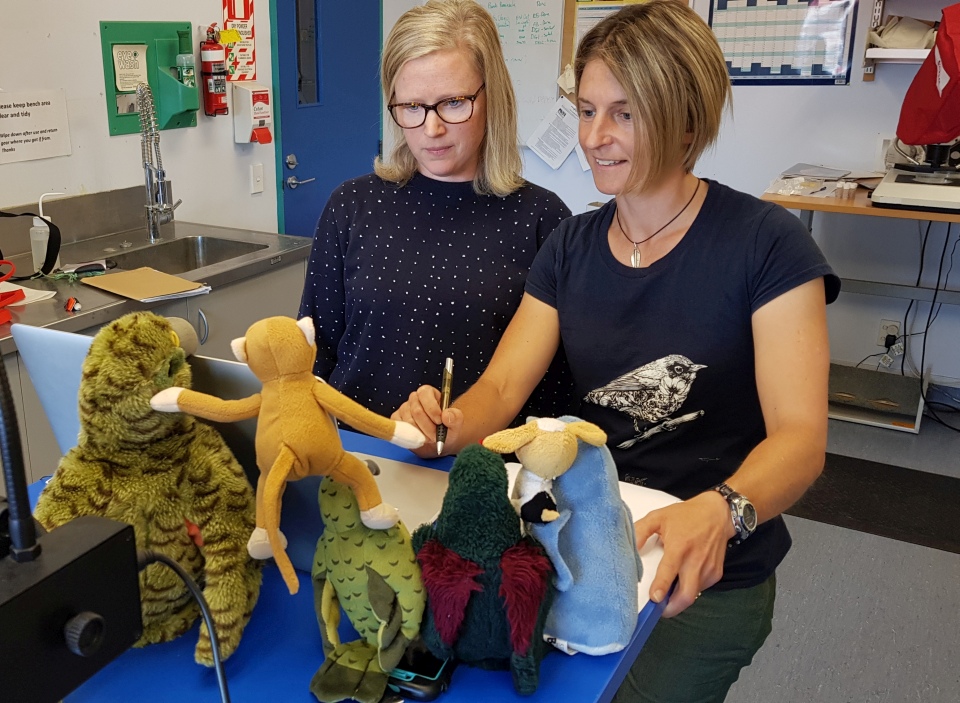
Joe, Shelley and the ambassadors talk to Paraparaumu Beach School and Tamatea Intermediate School during the web conference. Image: LEARNZ.
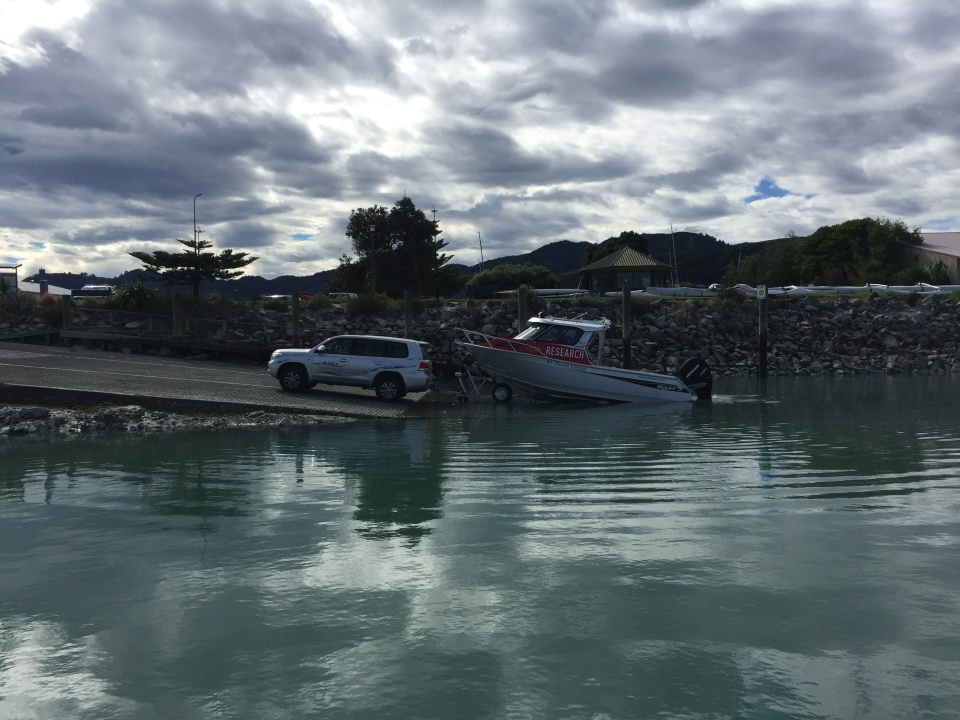
The NIWA research boat is launched in preparation for your trip out into Tasman Bay. Image: LEARNZ.
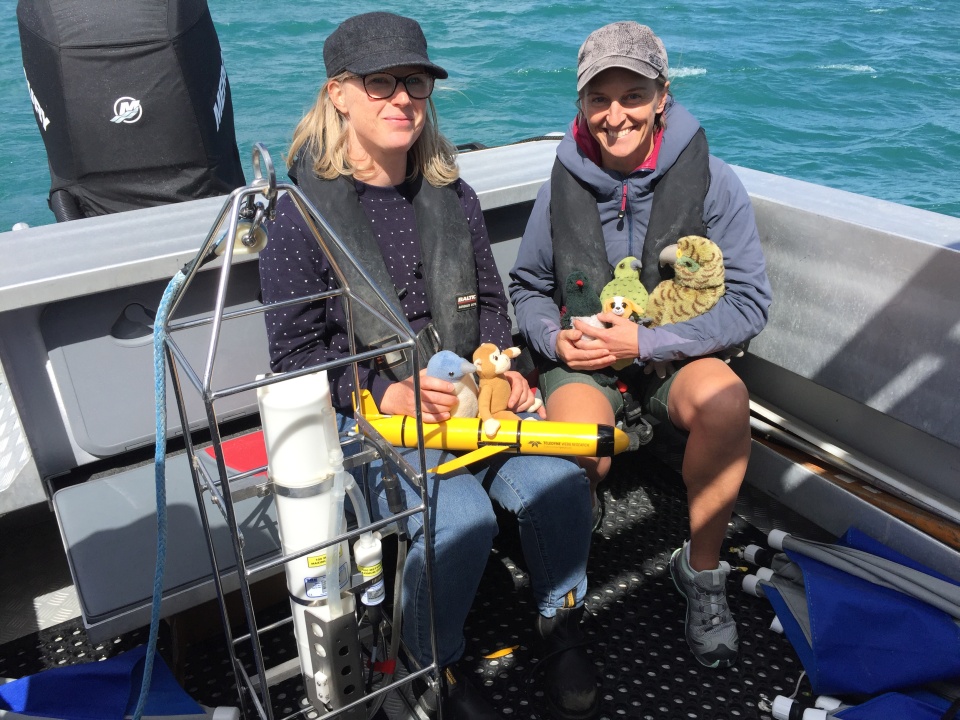
Joe shows Shelley and the ambassadors CTD instruments used to measure salinity, temperature and depth of seawater. Image: LEARNZ.
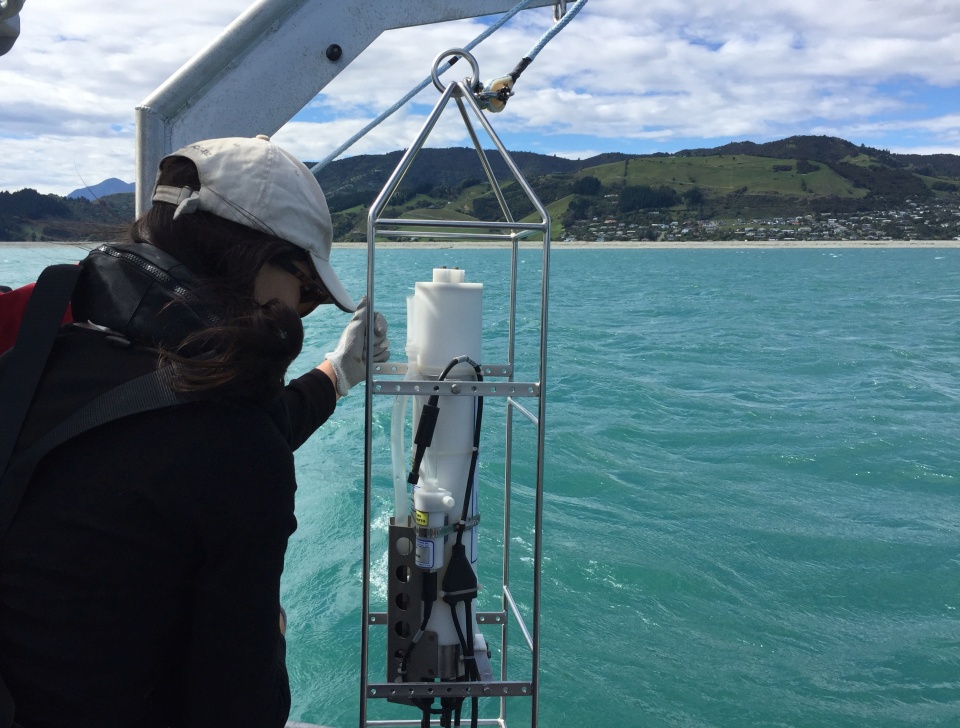
Olivia prepares to lower a CTD into the water in Tasman Bay. What are these instruments used for? Image: LEARNZ.
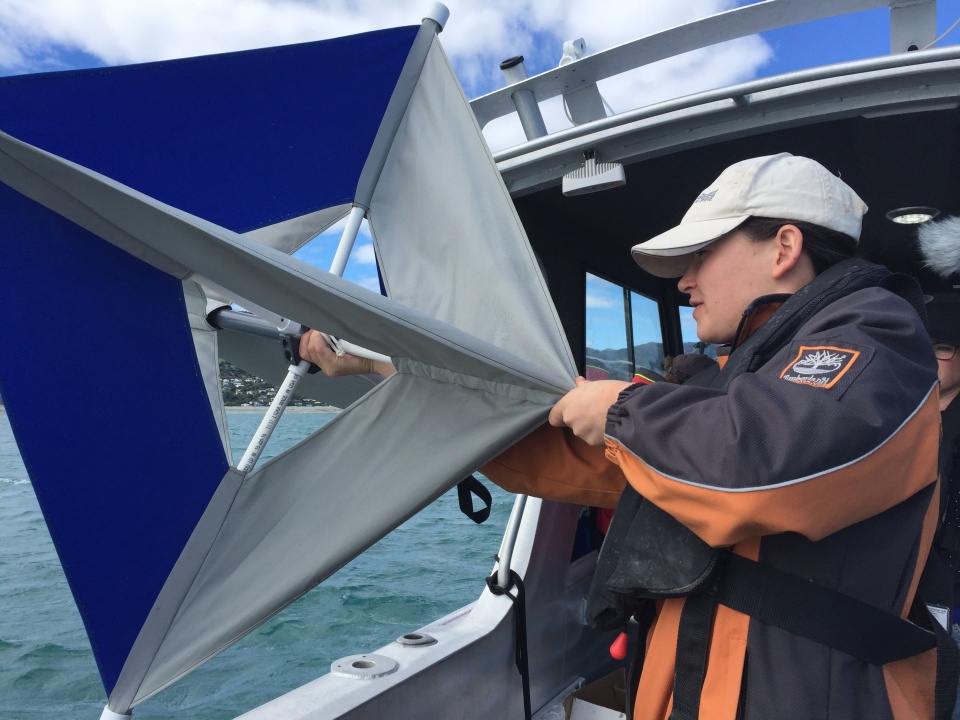
Olivia sets up a drogue which will connect to a drifter to track ocean currents. Image: LEARNZ.
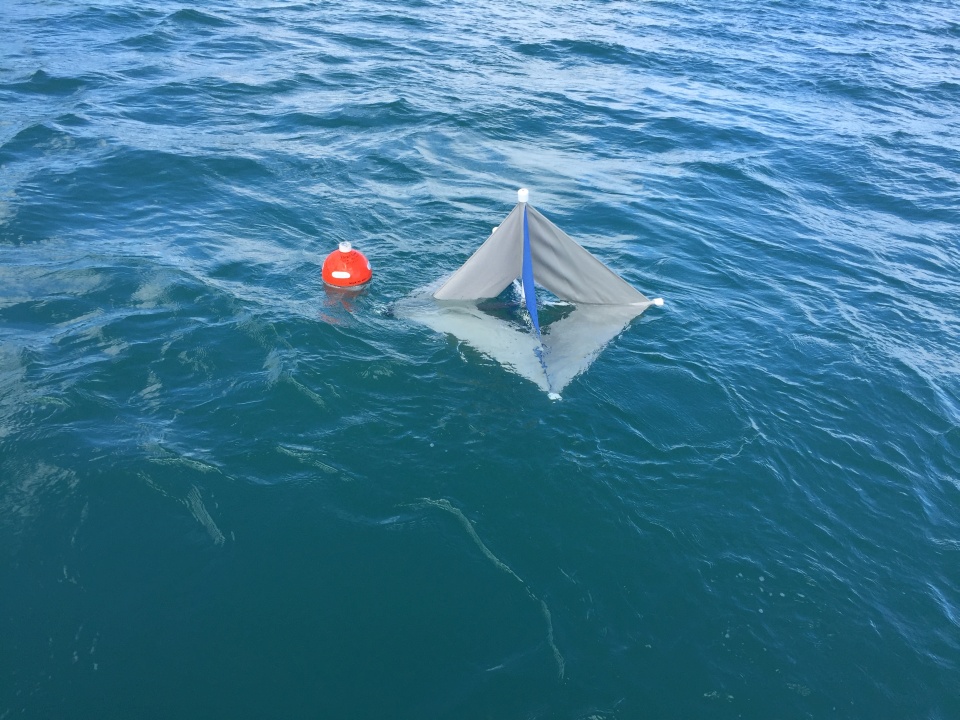
A drifter is launched off the boat in Tasman Bay. You can see how the drogue is beginning to sink. Image: LEARNZ.
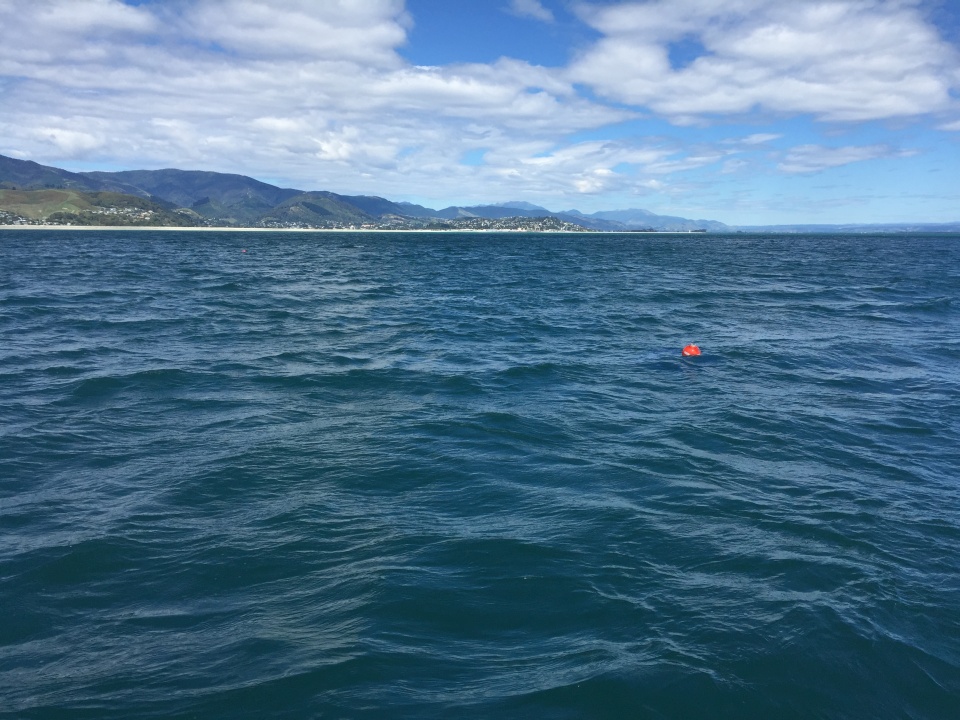
The drifter moves with the ocean currents away from the boat. Image: LEARNZ.
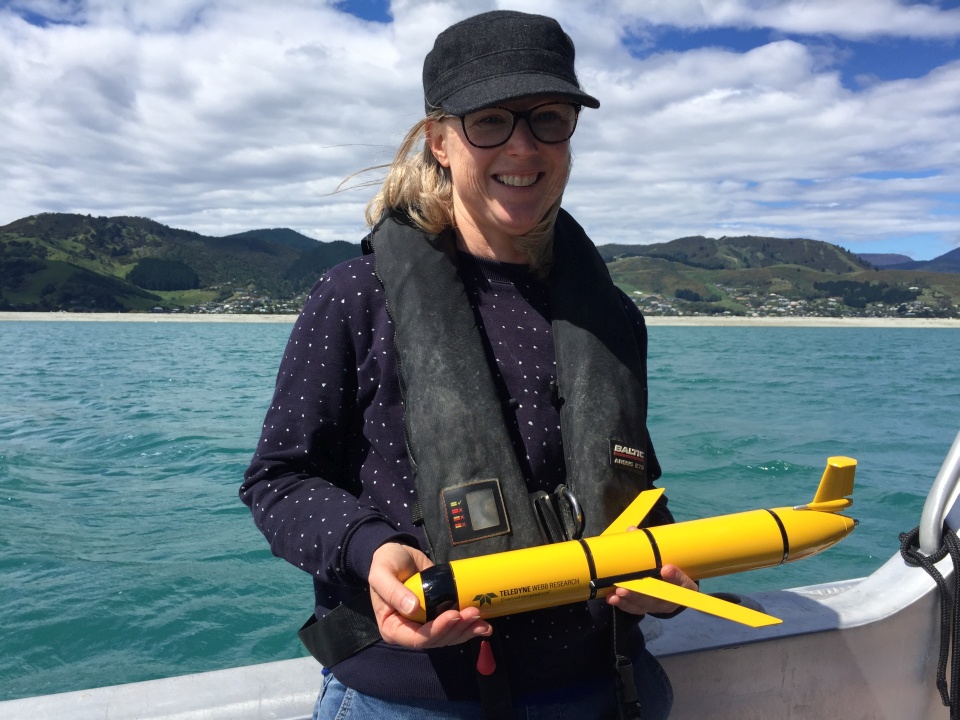
Joe shows you a model of a robotic glider which also measures salinity, temperature and depth. What do you think are the benefits of using a glider rather than a traditional CTD unit? Image: LEARNZ.
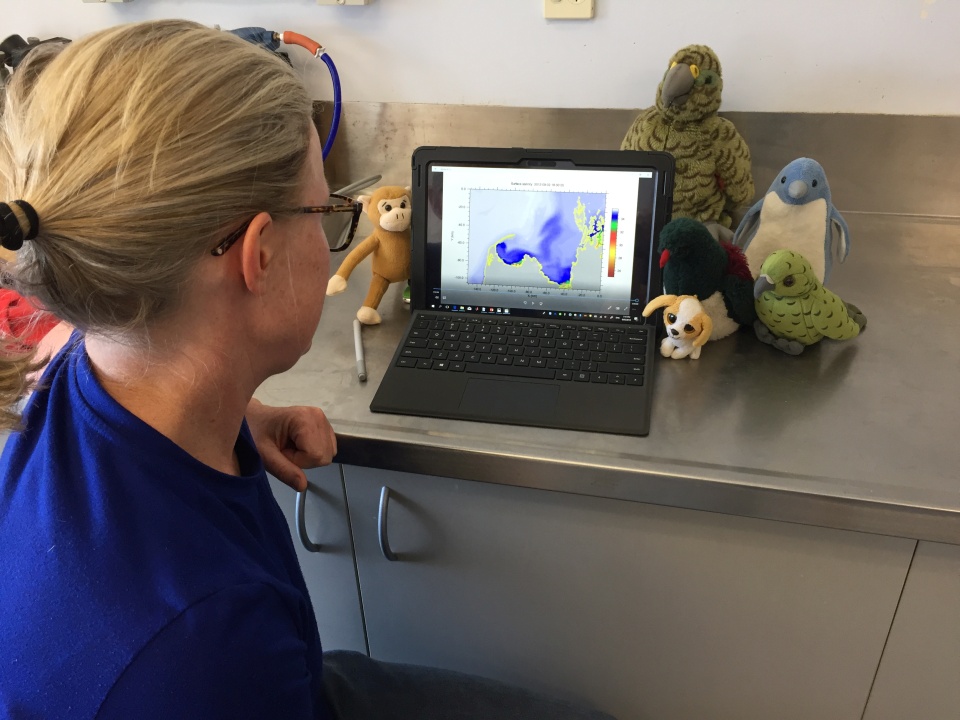
Joe shows you how information collected can be used to create computer models. This model shows how water moves in Tasman Bay. Image: LEARNZ.